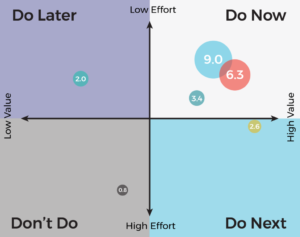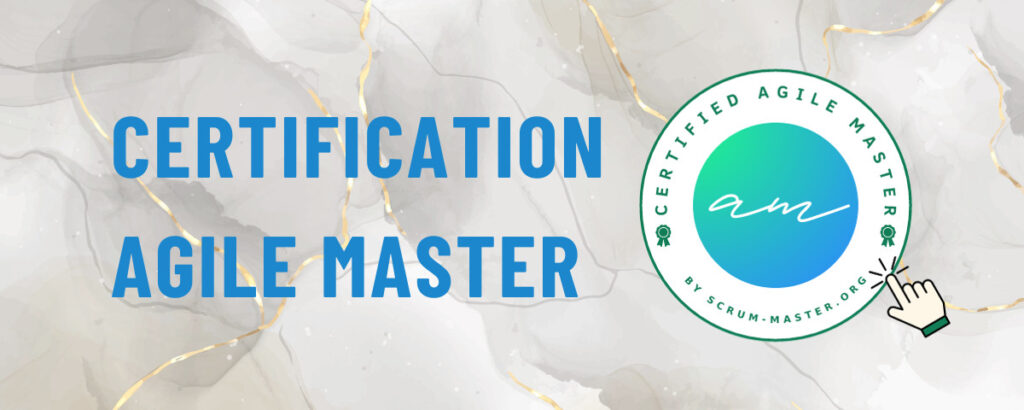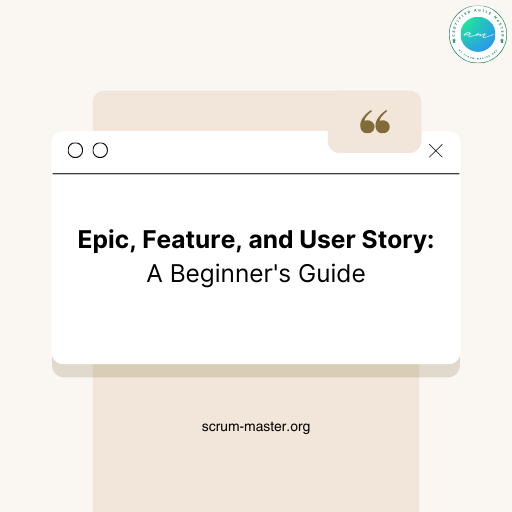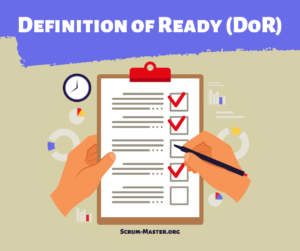My customers often ask me how to prioritize functionalities (Epics or User Stories) in a SAFe organization. Generally, my answer is that the ideal method is Weighted Shortest Job First – also known as WSJF. I also recommend this method for other agile projects that don’t use SAFe.
At first glance, the WSJF method may seem complicated. Let’s demystify it in this article.
Weighted Shortest Job First (WSJF) is a mathematical prioritization method for sequencing jobs such as Epics (epics), Features (or smaller backlog elements (User Stories). The objective of this prioritization method is the same as all the other methods: maximize the value of the functionalities delivered by the Scrum team.
This method is particularly useful when :
- There are many stakeholders in a Scrum team.
- Planning takes place at Epic or Feature level, and several teams work on the same product in a SAFe organization.
- A team works on different product flows, with one or more Product Owners for each product. I don’t subscribe to this type of operation at all, because it’s contrary to the Scrum rules. Nevertheless, I frequently come across the situation where a single team is working on several products in parallel.
How is the WSJF calculated?
In the philosophy of Lean-Agile philosophy used in SAFe, any functionality not delivered on time incurs a cost. This cost is called the Cost of Delay. The aim is then to minimize this cost to increase efficiency and deliver maximum value at the end of an iteration.
WSJF is therefore a tool that uses an easy formula to determine a figure representing the right compromise between the value the feature will bring if delivered, and the time it will take to develop it.
The WSJF calculation takes the following criteria into account. For all these indicators, we use a notation based on a Fibonacci sequence in ascending order:
- User-Business Value: This is a relative value that expresses the functionality’s business value. it is important to ensure that the business value chosen for each feature is estimated in relation to the others. In this way, Stakeholders can estimate the Business value of each feature, rather than simply choosing the highest possible number.
- Time Criticality: This criterion indicates how critical a feature is. Is there a critical external or internal deadline? Or are there milestones on the critical path that will be impacted if this feature is delayed? Is it a legal requirement with a specific deadline? The higher the value of this indicator, the more critical the functionality is for the product.
- Risk Reduction or Opportunity Enablement: Determines whether this feature reduces risk or facilitates the development of other features in the future. Does the feature mitigate a risk (e.g. avoid a data center failure)? Or does it enable a new business opportunity (e.g. entry into a new market)?
- Job Size: Size of feature/activity to be developed/done. We also talk about effort. This value can be estimated by the development or production team.
By definition, the WSJF formula is as follows:
WSJF = Cost of Delay / Job Size
Cost Of Delay: The cost of delay is equal to the sum of the three values: User-Business Value + Time Criticality + Risk Reduction and/or Opportunity Enablement.
Hence the formula :

So, the higher the WSJF value, the higher the functionality can be prioritized in the product backlog.
Prerequisites for successfully implementing the WSJF in your organization
In order to derive maximum benefit from this prioritization technique, we recommend the support of an experienced coach or Scrum Master, at least for the first time.
There are a few pre-requisites to bear in mind before carrying out this exercise:
- Upstream, carefully prepare the first workshop to introduce this prioritization method; hence the need for support from an Agile Coach or Scrum Master.
- Invite Stackholders, Product Managers and Product Owners to use this prioritization method in future iterations. To do this, they need to understand this method, so that they can better explain it to Scrum teams and apply it in their Backlog Refinement rituals.
- Before the context workshop, make it clear to the group that the prioritization needs to be carried out (strategic theme issues, for example).
- If you’re using Jira, check that your Jira instance provides the fields needed to calculate the WSJF value. Also check that WSJF is automatically calculated on Jira. This will greatly facilitate the implementation and adoption of this prioritization method. If you don’t have the necessary fields, contact your Jira admin to develop these fields or to install a Jira plugin (free or paid) allowing you to set up the WSJF easily on your Jira instance(Atlasian marketplace link).

Disadvantages of the WSJF method
- Time-consuming calculations. This is one of the main problems with the WSJF hierarchical method. If a Product Owner has hundreds of backlog items (e.g. for a mature product), then he must spend a lot of time prioritizing them using this method. It also takes time to estimate the values (albeit relative) for each of the WSJF components.
- Inhibit complex (large) projects/initiatives. If the Business Owner has a good idea for a feature that would bring value to the product, but the WSJF calculations don’t show a high score to get to the top of the list, its implementation will most certainly be postponed to a later stage. This makes the method a little restrictive in the implementation of considerable, long-term business ideas. Overall, like the Value vs Effort method, we can say that the WSJF method prioritizes short-term gains over large, time-consuming projects. That’s why I advise my teams not to follow WSJF values religiously. By encouraging them to think critically about the values they espouse.
- The sum of relative estimates of different parameters can sometimes lead to sub-optimal results. Using relative scales rather than absolute numbers avoids unnecessary precision and tends to be easier for people to estimate. But this can lead to errors in prioritization.
Advantages of the WSJF method
- For me, the main advantage of the WSJF is to have a common prioritization system for all teams on the SAFe train. this helps prioritize cross-functional features.
- Promote Backlog completeness and consistency. Stakeholders can expect reliable and predictable results with this method of prioritizing the Backlog. In fact, the development team will focus on the functionalities that bring the most value to the organization.
- Provide clarity and understanding. WSJF is an excellent tool for aligning teams with priorities and objectives. The model brings clarity by identifying the specific elements that need to be addressed first, and provides clear information on how the prioritization decision was made.
- Take into account technological constraints and implementation efforts. This prioritization technique takes into account not only the cost of delay (business value, but also time criticality and risk reduction), but also the technical aspect. It tells us (in a macro way) how difficult and time-consuming the development of each feature would be via job size.
- Focus on increasing return on investment, while making efficient use of human resources (so it’s suited to organizations with limited resources).
Further information
- Discover a another prioritization method called RICE. This technique offers another structured approach to evaluating, comparing and thus prioritizing Backlog elements. It takes into account four other key criteria: Reach, Impact, Confidence and Effort.
- The Merrill & Covey matrix. A powerful tool for prioritizing a to-do list or backlog.
- Simply prioritize a backlog with 4 levels of criticality using the MoSCoW method.
Our sources for this article are listed below:
- WSJF, on the official SAFe 5 website.
- The following article: Prioritization Methods and Techniques- Part 5: Weighted Shortest Job First (WSJF) as a Holistic Lean-Agile Approach to Backlog Prioritization, by Martin ANDREEV.
- The most comprehensive book on the SAFe method by Richard Knaster: SAFe 5.0 Distilled – Achieving Business Agility with the Scaled Agile Framework.










